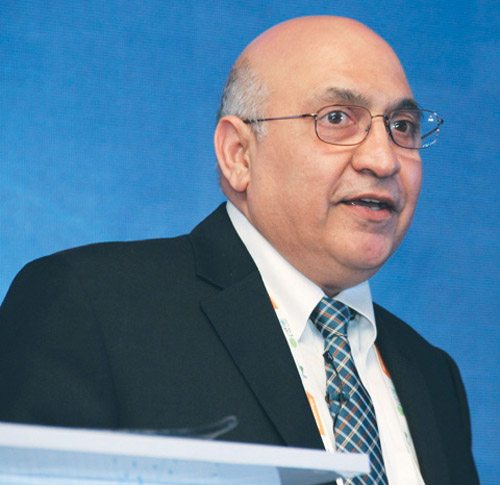In this interview, we take a look at the integration trends in electronics, how fab technology is evolving and if Moore’s law will hit a wall at all. Sunit Rikhi, vice president of the technology and manufacturing group and general manager of Intel Custom Foundry, Intel Corp., speaks with Dilin Anand of EFY

Q. The Internet of Things (IoT) buzzword is widely used these days. But fab has had its equivalent almost two decades ago. What is the long-term effect the IoT has had on electronics?
A. The IoT as a term represents all smartdevices that will drive the growing Internet usage in a connected world. As for fab, technologies have existed for quite some time to enable the increasing integration of systems on chips (SoCs) that fuel devices everywhere.
This increasing trend has been with us forever. It was there when Intel introduced the 4004 processor with 2000 transistors on a chip, when it introduced the 80386 processor with over 275,000 transistors on a chip and it is here when processors carry billions of transistors on a board.
In recent times, we have started putting not just processors but systems on a chip, which means integrating diverse circuits on a single piece of silicon and sometimes in a single package with multiple pieces of silicon.
Q. Did this trend have an impact on the fab side of things?
A. From the fab technology point of view, the biggest change brought about is that of going from a processing unit to a system. So, in order to support a central processing unit (CPU), we would need a limited set of functionality and limited scope of envelope of technology capability.
For example, you have digital devices to support a CPU, while to support an SoC, you have to have more than just digital devices. You would need input/output (I/O) devices, radio frequency devices for communication and other components. So it is the SoC technology that has come up as a result.
Q. You get to play with the latest process technologies before most of us even become aware of their existence. What is cutting edge according to you?
A. A few years ago, I met this gentleman at a conference who explained how he was at 130nm node and had heard a lot about 90nm node with its cutting-edge technology. And I was sitting there about to announce the 32nm node, three generations ahead of what this gentleman considered cutting edge. It showed me that we have a view of the world from our vantage points.
We are currently designing IPs and starting to support foundry customers on 10nm designs. We have many designs in process on 14nm and many designs in production on 22nm. Planar transistors have been history for a while; it is all tri-gate and multi-patterning lithography now.
Q. Will we hit a wall with advancing process nodes?
A. The inventor of Moore’s law, Gordon Moore, said in his keynote speech at the International Solid-State Circuits Conference in 2003, that, “My law is about exponentials and no exponential will last forever.”
To me, it seems like we overindulge in speculating about the wall and the timing of when we will hit it. Our energy is better spent focusing on delaying that event, not predicting it. And perhaps there will not be a well-defined wall.
Q. Could you elaborate on how you see it?
A. The way I analogise it in my mind is that we are running in fog and it is getting denser. Leaders hear footsteps behind them and followers hear leaders’ footsteps ahead of them. Leaders hope for the sounds of followers’ footsteps to grow fainter and followers hope for the sounds of leaders’ footsteps to grow stronger. Some are tired and would like the whole run to stop. Some are afraid they will run into a wall. And then there are some who focus on the run. I am part of the latter group of people.
Q. What kind of challenges do you see at the fab level, for each successive technology node improvement?
A. New transistor architectures based on new materials and lithography to print and resolve smaller and smaller dimensions are the major challenges.
Q. Does the equipment set change for every node?
A. No, Intel targets approximately 20 per cent change to the equipment set when defining the next node.
Q. Does change in product architecture affect the fab equipment?
A. Product architecture changes are usually done within the scope of a defined technology. Equipment changes are driven by new technology definition.







